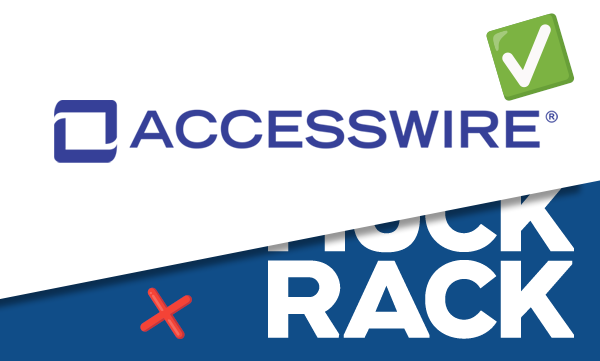PR Measurement: Evaluating the Success of Campaigns
Without rigorous PR measurement approaches, it’s impossible to ascertain whether your PR initiatives are making the gains they were created to actualize.
This article will teach you how to get specific about measuring the performance of your press release distribution and strategy so that you can pursue PR campaigns with amplified disruptive potential.
PR Measurement 101: The Barcelona Principles
In 2010, a summit of public relations professionals representing more than 30 countries convened in Barcelona to draft the first comprehensive framework for gauging the effectiveness of PR activity and communications.
Together, they came to a consensus on the seven principles for public relations or “strategic communications” measurement. Updated in 2015, these are now recognized as the industry benchmarks. 1
Principle 1: Goal Setting and Measurement are Fundamental to Communication and Public Relations
The first principle stresses using SMART (specific, measurable, attainable, relevant, and time-bound) goals to plan and evaluate the profitability of PR efforts concerning a target demographic.
An outlined business objective and its evaluation must reflect both quantity (e.g., breadth of reach) and quality (e.g., the public’s attitudes towards a brand) over a specific time frame. Assessments should integrate both traditional media coverage and newer social media to gauge brand awareness, attitudes, and behaviors.
Principle 2: Measuring Outcomes is Preferable to Measuring Outputs
In the world of PR and communications, there are two orientations from which to examine public relations initiatives:
- PR Outputs – The original content or actions executed by public relations professionals to communicate on behalf of the brand or organization. These may include press releases, events, Tweets, etc.
- PR Outcomes – The yield generated by outputs, and their effects on the public’s attitudes or behaviors as they relate to a brand or organization. These may include outside brand mentions, changes in consumer behaviors, Retweets, etc.
This second principle reflects the lateral bent of internet-based communications: audiences spread information side to side, back and forth, rather than hierarchically. No matter how voluminous a company’s PR output is, failing to generate measurable outcomes is a sign they need to revise their PR strategy.
Principle 3: Effects of PR on Organizational Performance Can and Should Be Measured
The third principle advances that PR measurement is essential to, not just an accessory of, the strategic communications industry and the clients they serve. Data science is indispensable to measuring a company’s progress and pitfalls and to synchronizing marketing and communication actions accordingly.
Principle 4: Measurement and Evaluation Should Include Both Qualitative and Quantitative Assessment
In this principle, qualitative and quantitative PR measurement methods are established as complementary: businesses need both to understand the other.Quality may have a negative, positive, or neutral valence. The Barcelona Principles recommend gauging quality on five fronts:
- Tone
- Credibility of the host
- Mode of message delivery
- Inclusion of a spokesperson or third party (where applicable)
- Prominence (e.g. mention in a lede)
Calculating website visitor volume, YouTube video clicks, or media coverage mentions is incomplete without appraising stakeholders’ quality of engagement or the impressions they retain after closing the tab.
Principle 5: Advertising Value Equivalents Don’t Reflect Communications Value
While Advertising and Public Relations work closely in tandem, they cannot rely on the same methods of measurement. Advertising Value Equivalents, or AVEs, measure the cost of media space or time—they do not adequately reflect PR outcomes.
Principle 6: Social Media Can and Should be Measured Consistently Alongside Traditional Media
Social media is built to be analyzed, so organizations must invest in analysis for PR and communications purposes. Social media presence and content analysis can be treated with web and search engine analytics, data from CRM, and data collected from audience surveys.
This principle also discourages the use of “vanity metrics” such as Likes, instead emphasizing metrics on online conversations and communities related to the brand or organization.
Principle 7: Measurement and Evaluation Should be Consistent, Transparent, and Verifiable
The final Barcelona Principle stresses the importance, as in any science, of fashioning measurements that are replicable, valid, and ethically sound. This means consistency in methodology, transparency with the client in demonstrating how studies were orchestrated, identifying any preexisting biases that may influence research yields, and more.
The Barcelona Principles in Practice
In total, the Barcelona Principles suggest targeting measurements at four main PR and communications outcomes:
- Financial
- Brand reputation
- Employees and internal stakeholders
- Public policy
Each of these outcome categories runs parallel with another set of measurements in the private sector known as KPIs.
What is a KPI?
KPIs, or key performance indicators, measure a company's success in comparison to its predetermined goals.
They may include measurements in gross profit, audience feedback, company performance, and policy impact. KPIs are collected by an exhaustive process of data collection and analysis, and PR KPI measurements place PR outcomes in conversation with business outcomes.
While PR measurements can be read in shorter time-frames, KPIs require a longer time frame to yield meaningful feedback. This is why it’s so important to pair KPIs and PR metrics.
PR Measurement: Tracking Your Website
Your company website is your home base, and tracking it can provide a host of valuable data on how you gain, retain, and turn off your audience.
Web Traffic
There are three main ways visitors interact with online content to land on your company website:
- Social content – Traffic inflow from your brand’s Instagram, Facebook, TikTok, etc.
- Owned content – Traffic inflow from content housed on your company website (e.g. blog posts, press releases, eBooks, etc.)
- Earned media content – Traffic inflow from hyperlinks on other platforms or websites (e.g. a third party mention on Twitter)
All of the content housed on your website should maximize potential interaction—meaning, all content should be shareable with visible buttons for visitors to “share” content on their social platforms.
It should also be strategically navigable using internal links, which can keep visitors plugged into your website through owned content.
Bounce Rates
Any productive PR campaign should be measuring incoming website traffic and outflowing traffic, known as the bounce rate.
Bounce rates can tell you how much time visitors spend on your website and possible triggers for their departure. Knowing this information will help you develop a more easy-to-use and hospitable online home base to keep your audience interested and plugged in.
Trackable Links
Using trackable links is a non-negotiable for any modern PR campaign—they’re essential for mapping how leads and referrals find their way to your brand. Knowing well-traveled digital inroads and digital roads-less-traveled will help you locate both target audience enclaves and untapped publics waiting for you to reach them.
PR Measurement: Tracking Your Rankings
Keeping up with your online presence means more than just monitoring your company website.
These methods can be incredibly complex, but companies have refined analysis methods to maximize brands’ efficiency in interpreting and wielding data to meet their PR goals.
SEO
SEO, or Search Engine Optimization, is how modern businesses anticipate their target audience’s search propensities and jockey for the top-ranked sites in response to their searches.
Press release SEO uses keywords to attract more traffic to a brand’s website and bolsters trustworthy repute with consumers.
SOV
Share of voice, or SOV, places your brand or organization in context: how do you measure up to your competitors? 2
Formulas for calculating SOV are becoming increasingly complex, crunching data on your brand, your competitors’ brands, your audience, keywords, and web rankings. Your share of voice reflects how many people you’re reaching, what you can learn from industry peers, and which PR actions you need to take to expand your orbit.
PR Measurement: Other Heavy-Hitting Metrics
PR is all about being, and staying in, conversation with your public. Whether these conversations happen remotely, as in the case of email, or in-person, like a sponsored pop-up, the Barcelona Principles tell us there’s always a way to gauge whether they add or detract from your brand’s goals.
Email Analysis
There are myriad ways to profitably analyze your PR effort via email. Some popular metrics include:
- Amassing more newsletter sign-ups
- Converting sign-ups to customers
- Clickthrough rate, or CTR (how many recipients clicked on an internal email link)
- Percentage of shared or forwarded emails
- Bounced emails (not delivered to the addressee)
Email analysis is an excellent means of gauging the volume of your brand’s following, as well the content that keeps them coming back. There’s a prodigious amount of data to be gleaned from email tracking, so select the metrics that are most appropriate and monitor them closely.
Corporate Impact
PR programs that take the form of events, CSR (corporate social responsibility) programs, or other brick-and-mortar campaigns are notoriously tricky to measure. That said, these may be measured in various ways, among them:
- Sales conversions
- Augmented social following
- Brand mentions
- Corporate donations
- Stakeholder satisfaction
These metrics cannot be read without consideration for quality. While sales conversations and consumer loyalty may indicate positive corporate impact, they do not necessarily indicate user engagement, or a “buzz” being generated around your product.
Cut Through the Noise with ACCESSWIRE
If you’re doing it right, public relations strategy will establish both short- and long-term goals, all of which should constantly be evolving.
That’s a lot to keep up with without professional support.
Fortunately, ACCESSWIRE provides fully-furnished PR measurement and data analysis for your communications campaigns. Check out our suite of custom data feeds, newsrooms, and cutting-edge reports that will help you gauge your current impact, and scale future initiatives to meet (and exceed) your brand’s goals and improve your press release service. For more information on how to write a press release or how to distribute a press release, contact us today at ACCESSWIRE!
Sources:
Global Alliance PR. Barcelona Principles.
Investopedia. Key Performance Indicators (KPI).
Search Engine Journal. Share of Voice: What it is, Why It Matters & How to Measure It.
Similar Blog Posts



PRODUCTS
ACCESSWIRE | All Rights Reserved

